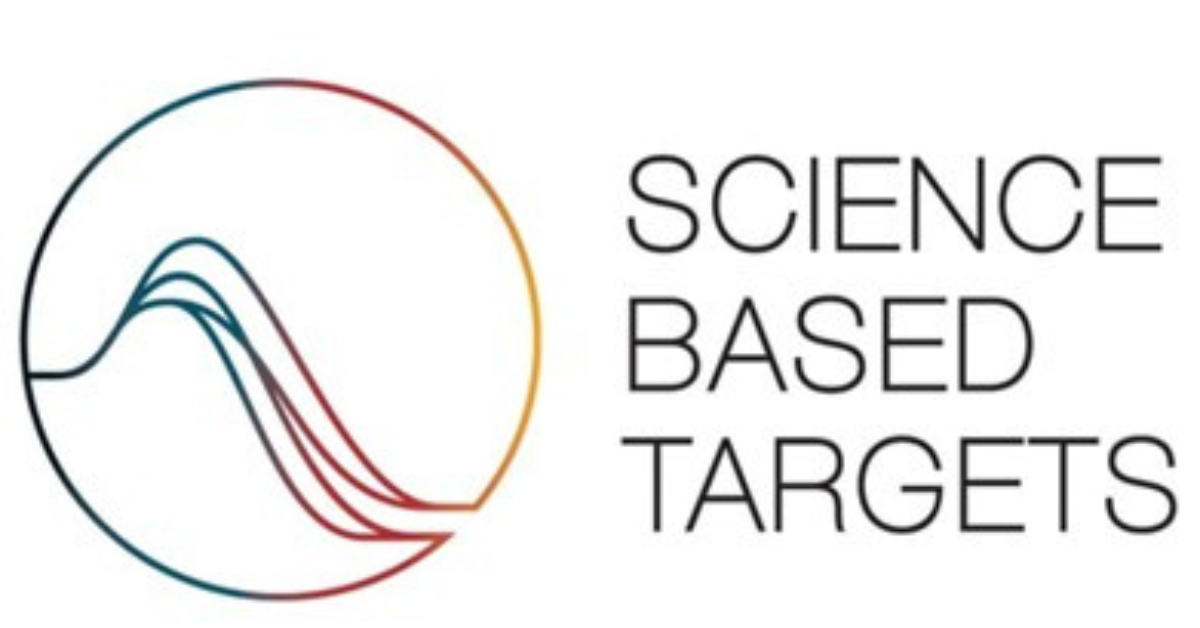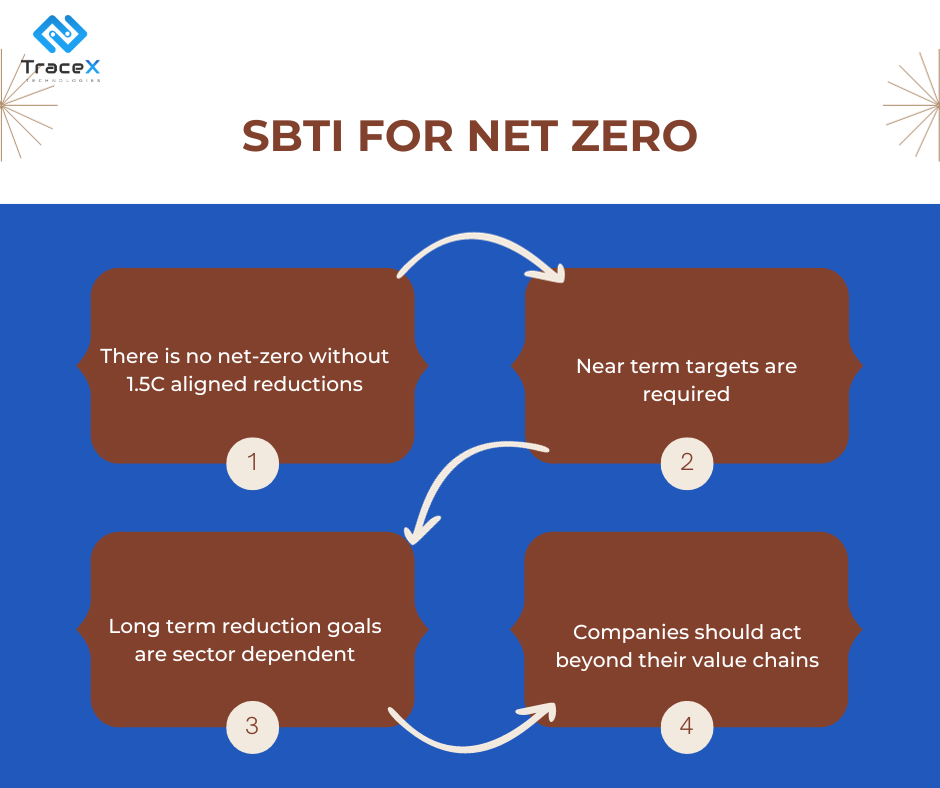Contact: +91 99725 24322 |
Menu
Menu
Quick summary: Embark on the journey towards 1.5°C alignment with our comprehensive guide to Science-Based Targets initiative (SBTi). Navigate the intricacies of setting ambitious and impactful emission reduction targets for a sustainable and climate-resilient future.

In the ever-urgent quest for sustainable practices, the Science-Based Targets initiative (SBTi) is not just an initiative; it’s a commitment to reshape the future. Spearheaded by a collaboration between CDP, the United Nations Global Compact (UNGC), the World Resources Institute (WRI), and the Worldwide Fund for Nature (WWF), SBTi empowers businesses to set and achieve science-based targets to reduce greenhouse gas (GHG) emissions. At its core, SBTi provides a framework for companies to align their emission reduction efforts with the latest climate science, contributing to the collective global effort to mitigate climate change.
In a world grappling with the impacts of climate change, the significance of SBTi cannot be overstated. As governments, businesses, and communities strive to transition toward a low-carbon future, SBTi emerges as a strategic guidepost. By committing to and achieving science-based targets, companies not only contribute to the global climate agenda but also position themselves as leaders in sustainable business practices. SBTi serves as a tangible manifestation of corporate responsibility, offering a roadmap to navigate the complexities of climate action.
Companies must set long-term science-based targets that align to 1.5°C for a target year no later than 2050 as part of their net-zero commitment. These targets cover a minimum of 95%of scope 1 & 2 emissions, and 90%of scope 3 emissions.
As we delve into this blog, we’ll unravel the essence of SBTi, understanding its significance in the larger context of climate action, and exploring the transformative journey it offers toward achieving the ambitious goal of limiting global warming to 1.5 degrees Celsius.
Science-Based Targets (SBTs) are emissions reduction targets that are in line with the level of decarbonization required to keep global temperature increase well below 2 degrees Celsius above pre-industrial levels and pursuing efforts to limit the temperature increase to 1.5 degrees Celsius. These targets are grounded in the latest climate science, ensuring that they are both ambitious and achievable.
Setting science-based targets involves adherence to key principles and criteria. SBTi outlines a robust methodology that considers factors such as sectoral decarbonization pathways, current emissions levels, and the company’s fair share contribution to global efforts. The criteria ensure that the targets are ambitious, measurable, and aligned with global climate goals.
SBTs align with and support global climate goals, most notably those outlined in the Paris Agreement. The commitment to limiting global warming to 1.5 degrees Celsius is a central theme, emphasizing the urgency and magnitude of action required. By aligning with these international benchmarks, companies participating in SBTi contribute to a collective and coordinated effort to address the climate crisis.
From 1992 to 2015, governments endeavored to establish a unified approach to combat the escalating greenhouse gas (GHG) emissions and associated climate change. COP21 in Paris marked a significant milestone where governments collectively committed to limiting the global temperature increase to within 2 degrees Celsius from pre-industrial levels. The Paris Agreement not only aimed at emission reduction but also imposed a cap on the total Carbon Budget, aligning its size with the maximum allowable temperature rise. Recognizing the global nature of this budget, there has been a shift in focus towards understanding how mitigative actions impact GHG concentrations in the atmosphere by 2050.
With the growing emphasis on target setting, the Science Based Target Initiative (SBTi) emerged in 2015. Its primary objective is to formulate decarbonization pathways tailored for individual companies, ensuring alignment with the goals outlined in the Paris Agreement. These pathways serve not only as a framework for identifying specific measures and actions but also as a means to establish appropriate milestones. Additionally, they facilitate a rigorous assessment of a company’s overall impact on the carbon budget set by society through the Paris agreement.
The first crucial step in the SBTi journey involves setting science-based targets for emissions reduction. This includes addressing Scope 1 (direct emissions from owned or controlled sources), Scope 2 (indirect emissions from the generation of purchased energy), and Scope 3 (indirect emissions from the value chain) emissions. The holistic approach ensures that companies consider their entire carbon footprint, fostering a comprehensive strategy for emissions reduction.
Achieving science-based targets is a collective effort that requires engagement with internal and external stakeholders. Securing commitment from leadership, employees, suppliers, and partners is essential. Transparent communication and collaboration foster a shared understanding of the importance of SBTs and create a unified front in the pursuit of sustainability goals.
Setting targets and securing commitments are vital, but the real transformative power lies in the execution. Developing a robust action plan involves outlining specific initiatives, investing in renewable energy sources, optimizing operational processes, and leveraging technology to achieve emissions reductions. The action plan should be dynamic, adapting to changes in technology, market conditions, and regulatory landscapes.

Embarking on the path of science-based targets is not without its challenges. Common hurdles include the need for accurate data collection and reporting, financial constraints associated with transitioning to low-carbon technologies, and the complexities of engaging stakeholders across a diverse value chain. Overcoming these challenges requires a strategic and proactive approach.
Companies often face barriers during the implementation phase, ranging from internal resistance to change to external pressures related to market dynamics. Overcoming these barriers involves a combination of strong leadership, effective communication, and a commitment to continuous improvement. Recognizing and addressing potential roadblocks early in the process ensures a smoother transition toward achieving science-based targets.
Integrating science-based targets into existing sustainability practices requires a cohesive strategy. Companies may already have sustainability initiatives in place, and aligning these with SBTs ensures a streamlined and synergistic approach. The integration process involves assessing current practices, identifying areas for improvement, and creating a unified framework that encompasses both existing sustainability goals and science-based targets.
Technology provides the tools and solutions necessary for companies to measure, track, and reduce their emissions effectively, aligning with the principles of Science-Based Targets and contributing to a more sustainable and low-carbon future.
Carbon Accounting software – Specialized carbon accounting software provides companies with the tools to accurately measure, report, and verify their greenhouse gas emissions. These platforms facilitate the collection and analysis of emissions data across the entire value chain.
Data Analytics and Monitoring – Advanced data analytics tools enable companies to monitor and analyze their carbon footprint and emissions data accurately. Real-time monitoring helps in identifying areas for improvement and implementing effective reduction strategies.
Emission Inventory Tools – Technology aids in the development of comprehensive emission inventories, allowing companies to track and quantify their emissions from various sources. This is essential for setting realistic and science-based reduction targets.
Simulation and Modelling – Simulation and modeling tools assist companies in assessing different scenarios and predicting the impact of various strategies on emissions reduction. This allows for the identification of optimal pathways towards achieving SBTs.
Supply Chain Traceability – Blockchain and traceability technologies enable companies to monitor and assess the sustainability of their supply chains. This transparency is crucial for understanding and addressing indirect emissions associated with the entire value chain.
Collaborative Platforms – Collaborative platforms and communication technologies facilitate engagement and cooperation among stakeholders, allowing companies to work collectively towards shared emission reduction goals and SBTs.
Carbon Offsetting Platforms – Technology plays a role in the development and management of carbon offsetting projects. Companies can invest in verified projects that reduce or capture emissions, contributing to the achievement of their SBTs.
Digital Reporting – Digital reporting tools simplify the process of reporting progress towards SBTs. Companies can efficiently communicate their achievements and adherence to targets through digital platforms and sustainability reporting tools.
Sustainability and Carbon Management Solutions streamline the process of adopting and achieving Science-Based Targets, offering companies a comprehensive and efficient toolkit to navigate their sustainability journey with confidence.
It provides robust tools for accurate tracking and reporting of greenhouse gas emissions. This capability is essential for companies to establish a baseline and monitor progress toward their emission reduction goals. The platform offers advanced carbon accounting features, allowing companies to analyze their carbon footprint comprehensively. This data-driven approach helps in identifying emission hotspots and optimizing reduction strategies. The platform seamlessly integrates with supply chain traceability, providing visibility into the sustainability practices of suppliers. This ensures that indirect emissions across the entire value chain are considered when setting and achieving SBTs.
TraceX employs blockchain technology to create a tamper-proof and transparent record of sustainability and carbon-related data. This not only enhances the credibility of reported information but also provides assurance for stakeholders and verifiers. Companies can benefit from real-time monitoring of emissions, allowing them to respond promptly to deviations from set targets. Automated alerts ensure that sustainability managers stay informed and can take corrective actions as needed.
TraceX simplifies the process of compiling and documenting necessary information for SBTi submission. The platform ensures that companies have a comprehensive and well-documented case for the approval of their science-based targets. It facilitates collaboration among different departments and stakeholders involved in sustainability initiatives. The digital monitoring, reporting, and verification (MRV) tool by TraceX ensures precision in tracking sustainability metrics, providing companies with a reliable and transparent system to document and verify their environmental initiatives with ease.
The Science-Based Targets initiative represents a pivotal moment in the global effort to combat climate change. As businesses increasingly recognize the urgency of sustainability, SBTi emerges as a transformative guide, offering a clear path toward meaningful emissions reduction and a future where global warming is limited to 1.5 degrees Celsius.
By understanding the key principles, benefits, and steps associated with SBTs, companies can position themselves as leaders in the sustainability landscape. The adoption of science-based targets not only contributes to a healthier planet but also enhances corporate reputation and attracts responsible investors.
While challenges are inherent in any transformative journey, the benefits far outweigh the obstacles. The commitment to science-based targets is not just a corporate responsibility; it is a strategic investment in a sustainable and resilient future. As we navigate the path to 1.5 degrees, the Science-Based Targets initiative stands as a beacon, guiding businesses toward a world where environmental stewardship is not just a goal but a shared reality.
